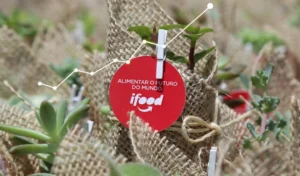Light means of transport are a good option for shorter journeys
When talking about urban mobility, a concept that has been widely discussed is that of micromobility, that is, having the option of using light means of transport, intended mainly for individual use – such as bicycles, electric motorcycles, scooters and skateboards – ideal for short journeys.
These modes have specific characteristics: they operate at a maximum of 45 km/h, they work using electricity or human power, they can be for the exclusive use of one person or shared and They are environmentally friendly.
Also known as microtransport, these vehicles are a sustainable alternative for rethink the current scenario of cities and its future. After all, the preference given to polluting modes directly reflects on the population's quality of life, which suffers from vehicle congestion, respiratory diseases, noise and atmospheric pollution, as a result of the high levels of carbon dioxide (CO2) released daily, one of the main gases of greenhouse effect.
A race against time
According to data from the Global Carbon Project organization, 52.74% of CO2 emissions occurred in the last 30 years. Although the Paris Agreement reinforces the need for countries to do their part to achieve neutrality in emissions of the substance in 2050, there is still much to be done.
Currently, around 86% of the world's carbon dioxide emissions come from burning fossil fuels such as oil, natural gas and coal. Hence the importance of expanding the use of non-polluting modes in cities.
Brazil is in 12th position in the Global Carbon Atlas pollution ranking, in which China, the United States and India occupy the first three places. Intensifying the adoption of microtransports, therefore, is one of the keys to improving urban mobility and gain allies in the fight against pollution.
Micromobility at iFood
Electric motorcycles
As an incentive to use non-polluting modalities, iFood announced, in February this year, new electric motorcycles for exclusive use by delivery partners. The 10,000 motorcycles, which are more economical than combustion models, are not yet available for purchase, but will be on the streets by the end of 2022.
Electric bicycles
In 2021, iFood Pedal became the largest in the field of electric bicycles for delivery in Latin America. The action, a partnership between the company and Tembici, was already available in São Paulo (SP), Rio de Janeiro (RJ), Salvador (BA), Porto Alegre (RS) and Brasília (DF), and arrived in February at city of Recife PE).
Drones
iFood is the first company in the Americas to be allowed to use drones in delivery. They complement the operation: upon receiving an order, the partner restaurant assesses whether that meal can be transported on the drone, and, if so, the device takes the order to the droneport, where the delivery drivers pick it up and take it to consumers.
ADA Robot
A ADA It is a non-polluting autonomous vehicle that acts as a reinforcement in delivery. Upon receiving the signal from the iFood application, ADA follows its route to the indicated restaurant, where it collects the order and takes it to the hub for pickup by partner delivery drivers. In 2022, tests of the vehicle began in condominiums across Brazil.
Know more:
Arrive by car? Discover the 15-minute city proposal
Traffic safety: 10 tips for those who ride a motorcycle or bike
Urban mobility: have you heard of MaaS?


